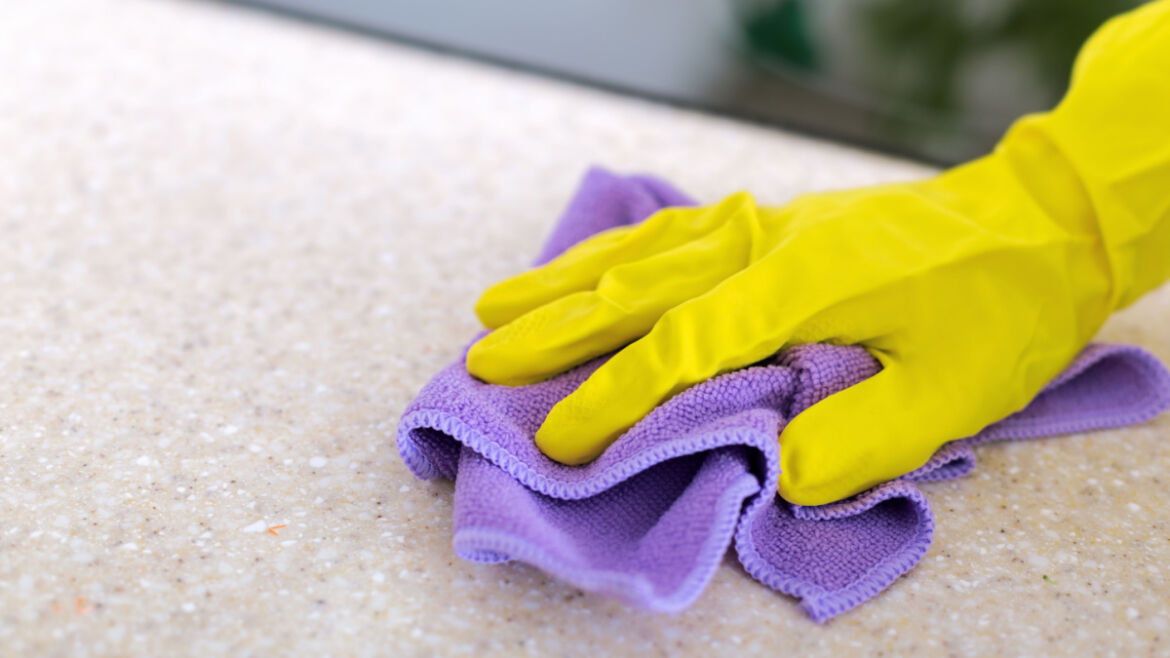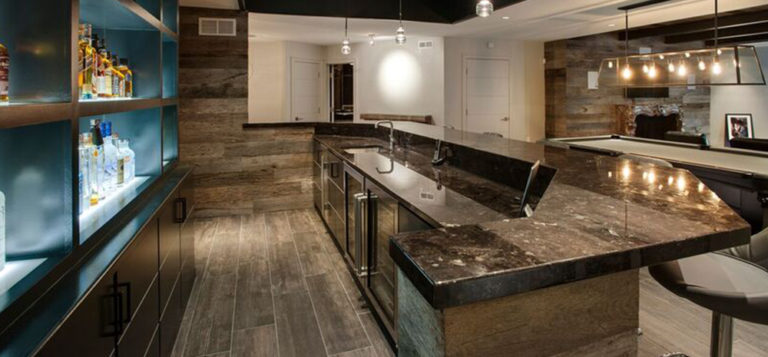Granite countertops are a popular choice in many homes due to their durability and aesthetic appeal. However, despite their toughness, they’re not impervious to damage. One common issue homeowners often face is water spots marring the beautiful surface of their granite countertops. These spots can be stubborn and tricky to remove without the right know-how.
Thankfully, the process of cleaning water spots on granite doesn’t have to be difficult. We’ll discuss why these spots occur, the materials you’ll need for the cleanup, and provide a step-by-step guide on removing the spots for good.
Can Granite Actually Get Water Spots?
Contrary to popular belief, yes, granite can indeed get water spots. Although granite is a durable and low-maintenance option for kitchen and bathroom countertops, it is not entirely resistant to spotting. Granite is naturally porous, meaning it can absorb liquids and potentially develop water spots over time. Common substances that might impact your granite include coffee, tomato juice, grape juice, mustard, citrus products, toothpaste, and various chemicals.
However, don’t be disheartened. The likelihood of granite spotting is relatively rare, and it generally performs well against water spots. Plus, with proper care, maintenance, and water spot removal processes, most spots on granite won’t bother you for more than a minute.
Why Is My Granite Getting Water Spots?
Granite, as robust and durable as it is, is a naturally porous material. This means it has minute spaces or holes that can absorb liquids if they are not wiped up promptly. When substances such as water, oil, or acidic liquids like coffee or wine are left on the granite surface for an extended period, they can seep into these tiny pores, leading to discoloration and water spots. The key to preventing water spots is swift action, such as cleaning up spills as soon as they occur, and regular maintenance, like sealing, which can make the surface less absorbent.
Step-by-Step Guide to Removing Water Spots from Granite Countertops
Ready to remove granite from your countertop? It’s a simple process, but that doesn’t mean there aren’t ways to get it wrong. Removing granite from countertops rarely requires more than a microfiber cloth and water, but you want to AVOID abrasive cleaners as much as possible. We’ll break down the steps you can take to ensure your granite stays in peak condition.
- Identify the type of spot: Before you start, it’s important to know that there are two types of water spots that can occur on granite – surface spots and hard water spots. Surface spots are caused by liquid that has seeped into the pores of the granite, while hard water spots are mineral deposits left behind after water evaporates.
- Gather your supplies: You’ll need baking soda, water, a soft cloth, and plastic wrap.
- Create a cleaning paste: Mix the baking soda with water to create a thick paste.
- Apply the paste: Apply the paste to the water spot, ensuring it is fully covered. For deeper spots, apply a thicker layer of the paste.
- Cover with plastic wrap: Cover the area with a plastic wrap and tape down the edges. This will keep the paste moist and allow it to draw out the spot.
- Let it sit: Leave the paste on the water spot for 24 hours. This gives it enough time to pull the spot out of the granite.
- Remove the paste: After 24 hours, remove the plastic wrap and wipe away the paste using a soft, damp cloth. Avoid scrubbing as it could scratch the granite surface.
- Rinse and dry: Rinse the area with warm water and dry it thoroughly. If the spot is still present, repeat the process.
- Seal the granite: Once you’ve successfully removed the water spot, consider applying a granite sealer to protect your countertops from future spots.
Tips to Prevent Future Water Spots
Preventing water spots on your granite countertops is easier than you might think. Begin by sealing your countertops – a good quality sealer can provide a protective layer that prevents liquids from seeping in. Remember to reapply the sealer as per the manufacturer’s instructions, usually every one to five years, depending on usage.
Also, make it a practice to promptly clean up any spills; the longer a liquid sits, the higher the chances of it causing a water spot. Consider using coasters and trivets to protect your countertop from potential spotting substances. For daily cleaning, stick to mild soap and warm water, and avoid harsh cleaning agents that can wear down the sealer. Finally, after cleaning, always thoroughly dry your countertops to prevent water from evaporating on the surface and leaving behind mineral deposits. With these simple preventative measures, you can keep your granite countertops looking their best for years to come.
Stay Ahead of Any Water Spots With a Quality Granite Countertop
Maintaining the pristine look of your granite countertops is easy when you choose countertops from Suburban Marble and Granite. With over 28 years of experience, more than 30,000 installations, and a commitment to excellence, we are the premier stone fabricator in the Philadelphia area.
Our vast online inventory showcases over 300 colors of full-slab natural stones, providing limitless options for your home or office. Visit our showroom in Warminster, PA, for a firsthand look at our exquisite products, or explore our countertops online. Don’t compromise on quality – choose Suburban Marble and Granite for your granite countertops and stay ahead of water spots with ease.


